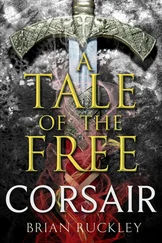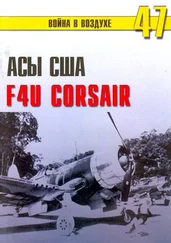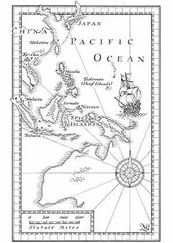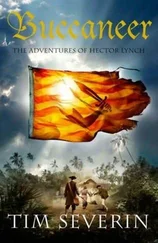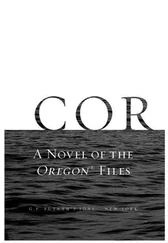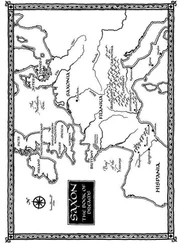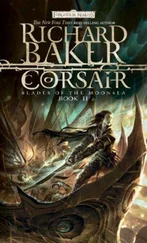A peal of thunder close at hand, and suddenly the horizon was blotted out by torrential rain which reduced visibility to a few paces. Hector’s clothes were saturated in an instant. He remembered the long parched days in the desert and tilted back his head in sheer delight. He opened his mouth and let the rain pour in. When he swallowed, he could taste the faint grains of dust which the travado had brought from the interior. Benjamin appeared at his side, gripping him by the elbow. ‘Go help Dan at the helm,’ he shouted. ‘I will show which way to steer.’
When Hector reached the wheel, Benjamin was already standing in the bow, peering into the murk. He raised his arm and pointed away to starboard. Obediently they steered to his instructions. Now the rain was hissing down, ochre rain on a brown river, and it was impossible to tell where the air and water met. More thunder, a massive growl which seemed to shake the sloop. A tremendous crack of lightning split the gloom.
Moments later the sloop was bucking and lurching as she was caught in the overfalls. Out of the murk raced a continuous onslaught of breaking waves. A lightning flash close at hand lit their foaming crests and turned them blinding white. L ’ Arc-de-Ciel surged on, the wind driving her forward. Benjamin gestured again, urgently this time, and Dan and Hector spun the wheel to bring the ship on her new course. There was no pattern to the waves breaking on the bar. They came from different directions, now smashing into her bow so she was tossed backwards, now heaving up along her sides so that she slewed sideways.
They never glimpsed St Louis. For two hours they battled with the overfalls, trusting to Benjamin’s directions, ploughing onward until they were sure that the turbulence was easing. Then the little ship ceased her wild gyrations and, though she still pitched and rolled uncomfortably, there was no mistaking that she was sailing on smoother water.
By nightfall the rain had ceased. The sky was still overcast so it was impossible to tell when the sun set, but the wind had eased to a moderate breeze and the air felt washed and clean. Benjamin came back from his lookout in the bow, and announced that they had cleared the bar and passed through the anchorage as well. They were in open water. Hector went down to the cabin and brought up the ship’s compass and set it down beside the helm. ‘Steer west,’ he said to Dan. ‘Tomorrow I will check the charts and set course for the Americas.’ He looked up at the sky. As swiftly as it had arrived, the travado had swept onward and out to sea. The first stars were showing through rents in the clouds. He thought he recognised the constellation of Orion. Now he would use its stars to find his way across the ocean. He gave a slight shiver of apprehension. There was so much to learn, and it was so easy to make mistakes. He thought back to Ibrahim, his corpse lying on the sand and the crusted blood of the wounds where the Labdessah had speared him to death, because he had followed Hector’s plan to ambush the Tooarick. And he recalled his last glimpse of Karp, the glint of the scimitar as it descended in a killing stroke. Poor mutilated Karp had believed in peace and forgiveness to the end, refusing to resort to violence even as he found a way to save his friends. Despondently Hector wondered if Dan and Jacques had been wise to place their trust in him. Too often he seemed to bring death and suffering upon his comrades.
His sense of gloom deepened as he allowed himself to recall his final meeting with Elizabeth, only to find that the details of that heart-rending encounter were already blurred. It seemed that the ordeal of the long trek across the desert had not only separated him from her physically, but was part of a great void that was growing wider and wider. In a moment of unhappy clarity he knew that, although he might return one day to trace what had happened to his mother, he would never see or hear from Elizabeth again.
Then he heard someone singing under his breath. It was Bourdon somewhere in the shadows. Hector could not distinguish the words of the song but it sounded like a Paris street ballad. Clearly Jacques was in good spirits and looking forward to reaching the Americas. At the helm there was a slight movement as Dan adjusted the wheel to hold the little sloop on her westward course. The Miskito appeared untroubled by the violent and sudden changes of fortune of recent days. Hector found himself taking comfort from his friend’s composure. ‘What’s it like there, out in the Caribees?’ he asked quietly. There followed such a long silence that Hector thought Dan had not heard his question. Then the Miskito’s voice answered, ‘There are places more beautiful than anything you could dream, sea as clear as glass, sand so fine and white that it looks and feels like flour, wreaths of mist hanging over jungle-covered hills.’ There was another long pause. ‘The people who live there are no different from those we have already known. Some are honest. Others are rogues and cheats. A number are men who have known hardship and are seeking a fresh beginning. They are like ourselves. When you have brought us across the ocean and I have visited my people, maybe we should try to join them.’
HISTORICAL NOTE
In 1631 a particularly brazen Barbary corsair was operating from Sallee on the Atlantic coast of Morocco. A sea captain from Flanders, he had ‘turned Turk’ and taken the name Murat Reis. That year, with two ships, he made a surprise raid on the Irish coastal village of Baltimore and successfully kidnapped almost the entire population: 107 men, women and children. He then took them back to North Africa to sell. A French missionary priest working in Algiers saw several of Murat’s Irish victims put up for auction. After that, very little more was heard of them.
Slavery in various guises was flourishing on all sides of the Mediterranean throughout the seventeenth century. The Regencies of Tunis, Algiers and Tripoli were infamous in the Christian world as places where the unfortunate captives were either set to work or held for ransom. Yet there were also thriving slave markets in Malta and Livorno where Muslims – and sometimes non-Muslim as well – were bought and sold. The Knights of St John of Malta were at the forefront of the trade in much the same way that the corsair guilds in the Regencies, the taifas, were the chief providers of human merchandise in North Africa. By the same token, it was virtual slavery to be condemned to the oar in France’s Royal Galley fleet, one of Louis XIV’s pet projects. On the Sun King’s galleys, French convicts sat alongside Turkish prisoners of war as well as Iroquois Indians captured in North America. The Turks could hope to be freed in a prisoner exchange, but many of the French galeriens died in chains while the unfortunate Indians mostly perished from fevers and malnutrition.
The turbulence of politics in the Mediterranean encouraged this state of affairs to continue. Against the general background of the Eternal War between Cross and Crescent, the various European nations were competing with one another for commercial and territorial advantage. France was suspicious of Spain; the Spaniards mistrusted the Portuguese; the English, Dutch and other Protestant nations jostled with one another even as they warily dealt with the Catholic powers. Everyone was nervous of the Turkish Sultan in Constantinople. Amid such disarray the Barbary corsairs thrived. A shipping list for the period between 1677 and 1680 (roughly the time of Hector’s and Dan’s fictional adventures) shows that the Algerines captured no less than 160 British ships. This would have provided approximately 8,000 British captives for the slave pens of that Regency.
This was also a time when the nature of naval warfare in the Mediterranean was altering. Oared vessels, the preferred warships since the days of ancient Greece, were obsolete. Too expensive to build, their huge crews were too costly to maintain, and their hulls and rig insufficiently seaworthy. Above all, they could not carry the numbers of heavy cannon which gave their rivals, the sailing ships, such devastating firepower. Nevertheless the flamboyant galley with its colourful pennants and massed ranks of half-naked oarsmen remained a potent symbol, much loved by contemporary painters and illustrators, many of them Dutch. They often depicted imaginary battle scenes between galleys and sailing ships. These same artists also found the Barbary city states, particularly Algiers, to be a worthy subject, basing their images on the reports of the embassies to the Regencies as well as the harrowing tales told by returned captives. There were many such memoirs by the ‘white slaves’ from Barbary though, by contrast, hardly any of the galley slaves of Christendom wrote about their experiences. An exception is the account written by a Frenchman, Jean Marteilhe, a Protestant condemned to the oar in 1701. He joined his first galley at Dunkirk on the Channel coast and describes the extraordinary pantomime – hiding under the oar benches, kicking their legs in the air, holding up their hands, coughing, bowing, and so forth – which he and his shipmates had to perform for the amusement of their captain’s guests on board.
Читать дальше

